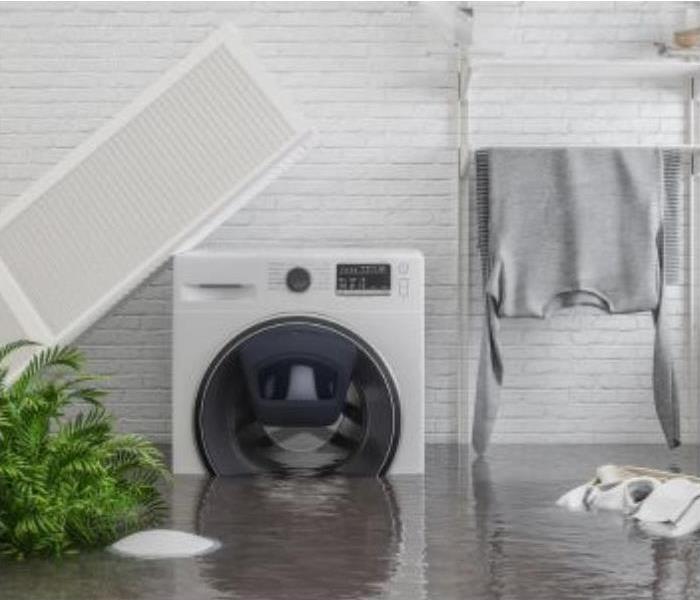The 3 Water Damage Categories and How to Clean Each Up
3/19/2024 (Permalink)
 Facing water damage? Understand its severity, the three water damage categories for effective response, and the concept of category deterioration.
Facing water damage? Understand its severity, the three water damage categories for effective response, and the concept of category deterioration.
When facing water damage restoration in Weymouth, understanding the severity of the damage is crucial. Water damage can stem from various sources, each presenting different levels of contamination. Knowing the three water damage categories can help homeowners or property managers respond effectively to minimize further harm. We’ll walk you through what each of these categories involves, how to clean them up, and what the category deterioration refers to. Besides, if you happen to need a company dealing with water damage restoration in Weymouth, we’ve got you covered! Keep reading to find out more!
What Are 3 Categories of Water?
These categories of water refer to the degree of cleanliness and potential health hazards associated with the water. The IICRC Standard for Professional Water Damage Restoration defines these three main categories of water damage based on the level of contamination. This standard and the categories ensure consistency and professionalism in restoration practices, helping professionals and homeowners assess the risk associated with the water damage and determine the appropriate cleanup procedures accordingly.
Categories of Water Damage
Water damage can wreak havoc on homes and properties, but not all water is created equal when it comes to potential health risks. Understanding the three categories of water damage is significant for effective cleanup, mitigation, and restoration. So, let’s dive into the details of water damage categories together for a clearer perspective!
Category 1 Water - Sanitary ("Clean Water")
Category 1 water damage involves water from a clean and sanitary source. This type of water carries the least risk to human health since it does not contain significant levels of contaminants. Common sources of Category 1 water damage include broken pipes, overflowing sinks, or rainwater leaks.
Cleanup Approach:
Since Category 1 water is clean, the cleanup process primarily involves removing the excess water and drying the affected area. Using fans, dehumidifiers, and proper ventilation can speed up the drying process and prevent mold growth. It's essential to act quickly to prevent the water from absorbing into building materials, which can lead to structural damage.
Category 2 Water - Significantly Contaminated ("Grey Water")
Category 2 water damage involves water that contains significant levels of contaminants, but not sewage. This type of water may cause health issues if swallowed or exposed to the skin. Common sources of Category 2 water damage include washing machine overflows, and dishwasher leaks.
Cleanup Approach:
Cleaning up Category 2 water damage requires protective gear, such as gloves and masks because of the presence of contaminants. The affected area should be thoroughly cleaned and disinfected to prevent the spread of bacteria and pathogens. Depending on the extent of the damage, professional water damage restoration services may be needed to ensure proper cleanup and sanitization.
Category 3 Water - Grossly Contaminated ("Black Water")
Category 3 water damage involves water that is grossly contaminated and carries severe health risks. This type of water contains sewage, chemicals, or other harmful substances. Category 3 water damage can result from sewer backups, flooding from rivers or streams, or toilet overflows containing feces.
Cleanup Approach:
Cleaning up Category 3 water damage requires extreme caution and should only be handled by trained professionals equipped with the necessary protective gear and specialized equipment. Given the high level of contamination, affected materials may need proper removal and disposal. Thorough disinfection and decontamination are essential to ensure the safety of occupants and prevent the spread of diseases.
Category Deterioration
It's important to know that water damage can get worse over time if not taken care of. Category deterioration means water contamination can go from a lower to a higher, more dangerous level. This happens as clean water sits still and mixes with different materials, causing germs to grow and more harmful substances to get in.
For example, Category 1 water damage left untreated can degrade into Category 2 or even Category 3 water damage. Factors such as time, temperature, and environmental conditions can speed up this deterioration process. As water sits still, it becomes a perfect breeding ground for bacteria, and viruses, worsening indoor air quality and carrying health risks to occupants.
To minimize category deterioration and prevent further contamination, it's crucial to act fast after a water damage incident. Even seemingly clean water can become more dangerous over time if not properly tackled. Professional water damage restoration companies can assess the extent of the damage, carry out appropriate cleanup measures, and prevent category deterioration through thorough drying, disinfection, and restoration efforts.
Understanding the three water damage categories is vital for effective cleanup and restoration efforts. Whether dealing with clean water damage or grossly contaminated black water damage, taking quick action can limit the damage, lower repair costs, and keep indoor spaces safe and healthy in the long run. Understanding category deterioration and its effects on water damage cleanup helps you protect your property and the health of those living inside.
Reach Out to SERVPRO of Weymouth, Hingham and Quincy
If faced with water damage in Weymouth, seeking professional water damage restoration services can help safeguard the health and well-being of occupants. Contact SERVPRO of Weymouth, Hingham and Quincy for immediate help with water damage cleanup and restoration tasks! Do so by calling (781) 337-0344 or by filling out an online form on our website! Don't delay tackling water damage issues, as quick action can make all the difference in minimizing damage and restoring your property to its preloss condition. Our team of professionals offers you 24/7 emergency services!






 24/7 Emergency Service
24/7 Emergency Service